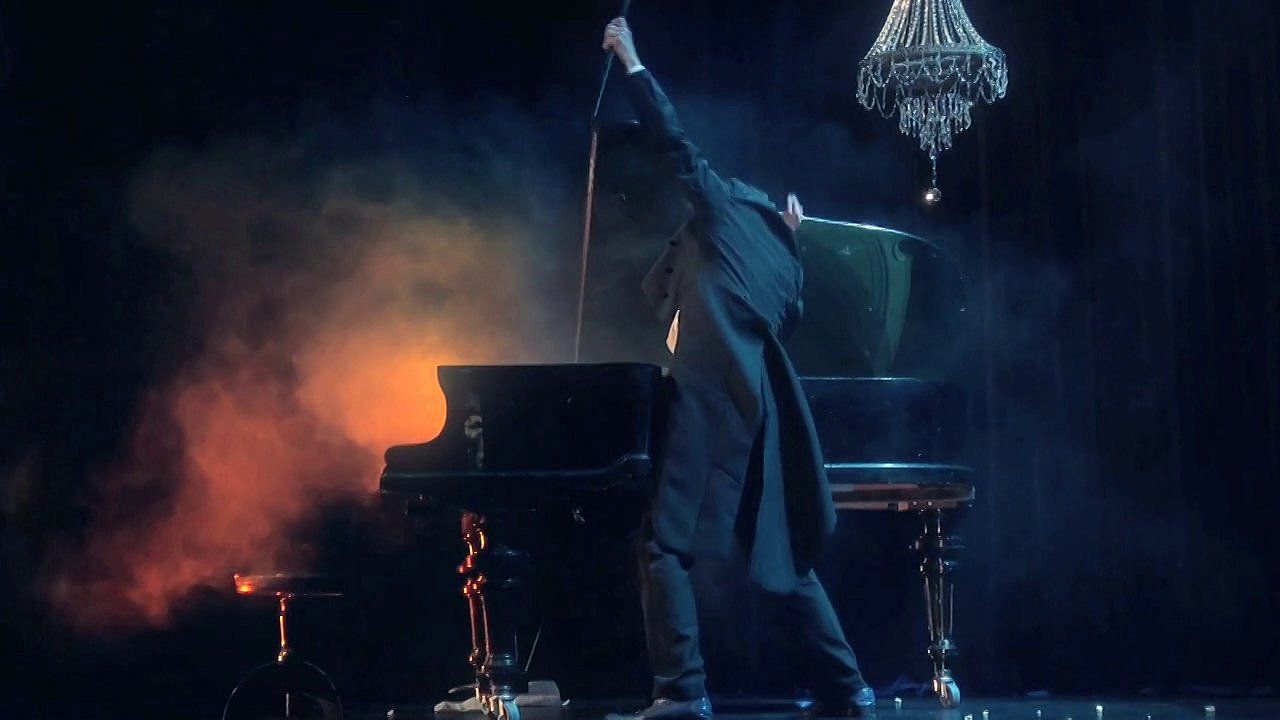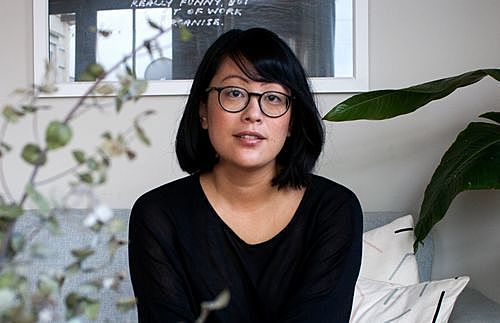Building Invisible Bridges: An Interview with Thomas Monckton
Rosabel Tan chats to Thomas Monckton about clowning, silence, and what the country needs.
To watch Thomas Monckton’s solo show The Pianist is to see worlds overlaid. Spaces are carved, erased, re-carved. Talc-dusted blue velvet is fluid and slippery, but then it’s taut, alive, a cartoonish boxing match. His titular character is comically beleaguered: determined to overcome the challenges of the world yet destined to make devastatingly mundane mistakes, caught in superstition, solving problems sideways. He wants to sit at his piano, but can’t. He wants to enjoy wine, but it’s hard. He wants to be celebrated, but he’s only human. It’s a nimble, absurdist meditation that pairs mastery with clumsiness and despair with endless hope.
“I went to see an orchestra for research,” says Monckton, “and the percussionist who had the job of hitting a large drum once or twice in a two-hour period lost one of his drumsticks.” Nobody else noticed, but Monckton watched as the man struggled through the rest of his performance, trying to find where it had gone. “But trying to look like he wasn’t looking for it, and in the process making it painfully obvious.” It was this moment of professional haplessness that provided inspiration for the show, which he developed in collaboration with Sanna Silvenoinen during artist residencies at Hämeenlinna City Theatre and Helsinki’s CIRKO Centre for New Circus.
“We created it through improvisation and choreography and lots of looking at the grand piano and wondering what we could do with it,” he says. “I think the main thing I came away with from the whole rehearsal process was that grand pianos are very, very heavy.” He pauses. “Later we discovered that touring a grand piano is quite difficult for the same reason.”
Monckton has been clowning his entire adult life. “It’s ultimately uncool and difficult,” says the 29 year-old, but the challenge of silence continues to attract him. There’s a seductive difficulty to the form. “Clowning is anarchic and rebellious by nature.” It strives to reveal universal vulnerability; it’s a brutal human critique writ kind. “The clown is riddled by flaws,” he explains. “It’s a relief to see imperfection presented in a way where you can laugh and enjoy it.”
Recently, clowning has stripped away much of the traditional visual aesthetic (no more red nose, no more painted smile) and has been experiencing a renaissance, a reinvention, and much of this is due to the blurring of boundaries. “Cross-genre performance has enabled artists to experiment with putting it in different contexts,” Monckton says, “and it can work really well in a lot of different forms. Clowning has always been useful as a bridge from one act to another, and it also works to bridge one genre to another.” It acts as a kind of amorphous glue. “From contemporary dance to circus, from visual theatre to comedy, and from performance art to entertainment.” The clown is there, holding it together.
He's learned much of what he knows from his training at Circo Arts in Christchurch and L’Ecole Internationale du Theatre Jacque Lecoq in Paris, where he now lives. Without this experience, he says, he wouldn't know how to do a backflip, nor how to move like a piece of crumpled-up A4 30gsm cartridge paper, nor how to do it all in his natural voice. “During an exercise at Lecoq," he says, "A group of four of us had to perform the physical qualities of acid. Because my French wasn’t that great, I thought the teacher was being helpful and saying ‘a seed’ in English for those like me who sometimes had trouble understanding the quick French instructions.” While the other three shook and twitched violently, Monckton slowly and earnestly broke through a seed pod, enacting the growth of a tree. Everybody has an inner clown; a set of traits that can be seen as both flaw and strength. Monckton's voice can be encapsulated in this moment. His style is to be a tree in a sea of acid, which is to say: “To do the wrong thing as confidently as possible.”
Monckton comes from Patea, a small town in South Taranaki with a history of precarious futures. Once the world’s largest cheese-exporting port in the 1920s, the economic stability of the town was thrown into turmoil when its freezing works was closed in the ‘80s. When he became a clown, Monckton left not just Patea, but New Zealand. “Working as a physical performer in Europe is like walking through a maze, and there are lots of voices at each path beckoning you to follow them,” he says, speaking of the myriad opportunities he’s been presented with overseas. “In New Zealand, there is no maze, and there are no voices. Just an empty plain and some tools with little notes saying ‘make it yourself’.”
He recognises this has both positive and negative implications: you can take risks here, you can build foundations, but ultimately they whittle back to a core truth: New Zealand is no place for a full-time clown. The path for up-and-comers is overgrown and unmarked, and the audiences are enthusiastic but small. The only tertiary-level clowning qualification offered in New Zealand – Christchurch’s Circo Arts – was discontinued after its facilities were damaged in the earthquake, and there are no concrete plans for its reestablishment.
Training at Circo was essential for Monckton’s career, and the loss of that structure has left a gaping hole that clowns are struggling to fill. “There should be a focus on funding young practitioners to get overseas,” Monckton says. “Instead of fighting against the drain, funders should be sending everyone they can overseas. That way, at least some of them will come back and pass on their experiences.” This would create the level of expertise that Monckton sees as necessary in order for the next step to occur: “Having a permanent physical theatre school….that provides a regular stream of trained artists into the mainstream is essential for any artform to develop.”
As testament to his belief, and his desire to see the form grow, Monckton set up a small grant in 2011 – the Scribble Circus Fund – to help artists in New Zealand develop new work. “I wanted to offer something to circus artists without them having to go through the massive book-writing process that is usually required to get funding, and without having to compete with the more more established genres of theatre and dance.”
He wants to create more opportunities. He wants to buy a circus tent to send home. He wants to create shows that will foster young performers. In addition to touring The Pianist though New Zealand, he’s brought his children’s show Caterpillars. Having developed it in Finland with Kallo Collective, he's cast two New Zealand performers in the role. “I hope to do that with future shows as well. It would be great if the circus community in New Zealand could be better connected to the international circuit, with artists creating homegrown shows that can tour nationally and internationally.”
Beneath all these efforts, the question of his future lingers. Will he return for good? “The idea,” he says, “is to split my time between New Zealand and the rest of the world.” Monckton will keep performing. He’ll keep creating worlds. He wants to chase the sun, pursue silence as a form, and continue building a bridge between those beckoning mazes of Europe and the ones slowly growing back home.
The Pianist plays at the Herald Theatre from 9-18 April
Tickets available from Ticketmaster

